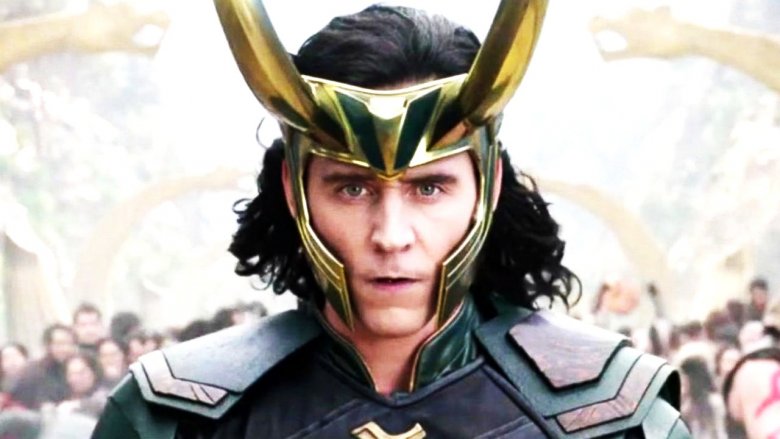The Plot Hole Infinity War Fixed From The First Avengers
Fun as they are, neither The Avengers nor Avengers: Infinity War are perfect movies. (We don't even have to say anything about Age of Ultron — everyone knows that one's got problems.) But the great thing about a shared cinematic universe is that no mistake is necessarily permanent — not in the long-run.
Not only do these movies almost always foreshadow the next one, they can also reach back into the past to smooth out the occasional plot hole — just like the comic books they come from.
We're right in the middle of the home media rollout for Avengers: Infinity War, with the physical release of the epic nineteenth movie in the Marvel Cinematic Universe being right around the corner.
But the physical media release for the movie is about so much more than just re-experiencing one of the spring's most exciting movies in the comfort of your home. In fact, the Avengers: Infinity War DVD and Blu-Ray release is chock-full of illuminating special features taking viewers inside the making of the movie, revealing fascinating details about how the filmmakers actually thread all of these different movies together.
In the commentary track for the film (which is also available on some digital downloads of the movie), directors Joe and Anthony Russo sit down with movie co-writers Christopher Markus and Stephen McFeely to break down how they wrangled ten years' worth of buildup into one cohesive climax.
In particular, the movie's commentary track has cleared up what is essentially a plot hole from Joss Whedon's The Avengers, finally closing the loop on a lingering logistical question that, until now, hadn't entirely made sense.
In that 2012 movie, the Odinson comes crashing down from Asgard to land on the Avengers' Quinjet, intercepting Natasha Romanoff, Tony Stark and Steve Rogers as they travel the skies with Loki in custody. But how did Thor actually get there from Asgard, when his typical mode of long, long-range travel — the rainbow-colored Bifrost Bridge — was seen being destroyed at the end of the Thor movie?
Apparently, the question stuck in the craw of Infinity War's screenwriters, who set out to provide a stealthy answer for the question in the opening scenes of Avengers: Infinity War.
According to the commentary, Thor was able to make his dramatic entrance with thanks both to dark energy, and to the last-ditch efforts of the Asgardian Heimdall, the former guardian of the Bifrost played by Idris Elba.
The comment comes during the early scene when the Hulk, beaten badly by Thanos in one-on-one combat, gets beamed back to the Earth by Heimdall before Thanos can destroy him. Heimdall's efforts, which come right before his ultimate sacrifice, allow the Avengers to have some crucial time to prepare themselves before Thanos' arrival, which makes all the difference in their ability to resist his invasion as much as they do.
"I will say, just to interrupt," says Markus, "That we just had a callback to what had once seemed like a bit of a paste job," referring to Thor's unexplained entrance in The Avengers.
"In Avengers 1," he continues, "Where Thor comes back, saying that 'Odin used all his dark magic to get me home,' and people said, 'Oh, that was just a cheat, 'cause you broke the Bifrost, and you just saw where the dark magic came from. Straight out of Heimdall."
Now that Heimdall has been permanently taken out of the Marvel Cinematic Universe — well, supposedly — one might wonder if Thor's ability to travel across great distances via the Bifrost or dark magic is now permanently done for. Conveniently, that's not the case — as the climax of Avengers: Infinity War shows, the Odinson is more than capable of bridging the cold expanse of space on his own now by using his new axe Stormbreaker, which was forged in the Nidavellir star by the giant dwarf Eitri — and a little help from Groot.
Avengers: Infinity War will be out on 4K Blu-Ray, standard Blu-Ray, and DVD on August 14. Digital copies — some with the special features, and some not, depending on the outlet — are on sale now.
